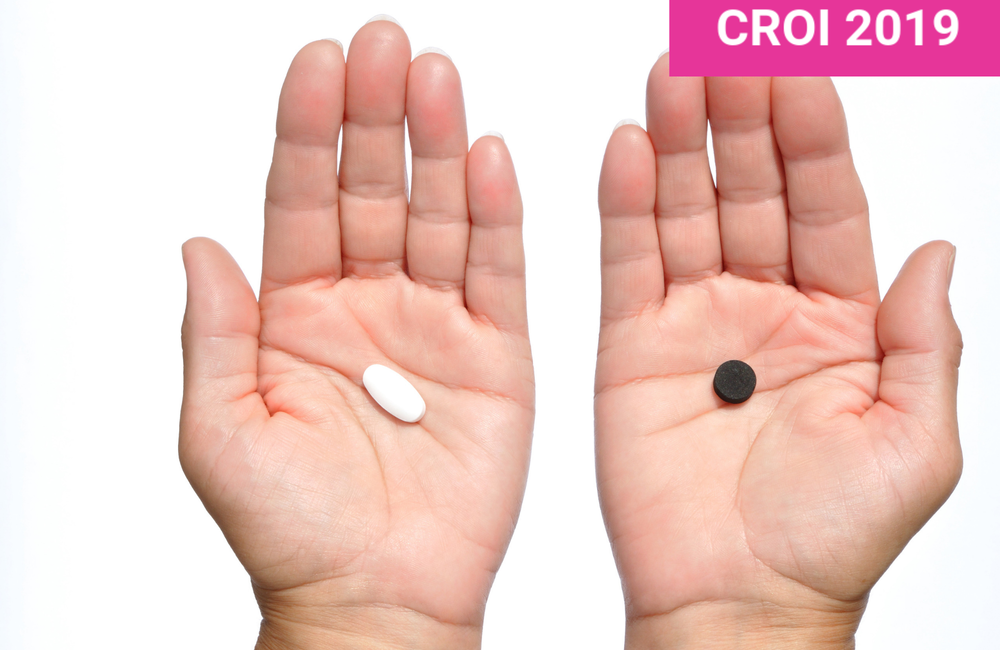
Virological response rates were excellent among patients receiving second-line antiretroviral therapy (ART) based on dolutegravir, even when regimens included a nucleoside/nucleotide reverse transcriptase inhibitor (NRTI) to which there was pre-existing resistance, according to research presented to the Conference on Retroviruses and Opportunistic Infections (CROI 2019).
The research was conducted in middle- and low-income countries and was designed to help guide second-line treatment choices.
Regardless of the presence of background NRTI resistance, approximately 85% of people taking dolutegravir had an undetectable viral load at the end of follow-up, including patients who took emtricitabine or lamivudine despite having resistance to these drugs.
The investigators believe their findings support interim World Health Organization (WHO) guidance to use dolutegravir and two NRTIs in second-line ART.
An increasing proportion of people in low- and middle-income countries are experiencing the virological failure of their first-line ART regimens and therefore require second-line treatments. Recommended first-line treatment is based on a non-nucleoside reverse transcriptase inhibitor (NNRTI), usually efavirenz. Until recently, WHO guidance recommended the protease inhibitor lopinavir/ritonavir for second-line treatment.
Second-line NRTIs are selected using an algorithm that takes into account previous treatment history. In essence, patients whose first-line treatment included tenofovir with emtricitabine or lamivudine switch to zidovudine with lamivudine, with patients who took first-line zidovudine and lamivudine changing to tenofovir with emtricitabine or lamivudine.
The DAWNING study was designed to establish whether a regimen based on the integrase inhibitor dolutegravir was non-inferior to lopinavir/ritonavir in second-line treatment. Forty-eight week follow-up data showed the superiority of the integrase inhibitor, with 84% of dolutegravir patients having an undetectable viral load (below 50 copies/ml) at the end of follow-up, compared to 70% of individuals in the lopinavir/ritonavir study arm.
Drug resistance is common among patients experiencing the failure of their first-line therapy, especially to the key NRTI drugs emtricitabine, lamivudine, tenofovir and zidovudine. It is often necessary to recycle drugs from a failed first-line regimen in subsequent therapy. Investigators from the DAWNING study therefore examined virological outcomes for different NRTI combinations in the presence of NRTI resistance.
Participants were screened for drug resistance at enrolment and were only recruited to the study if their HIV was sensitive to at least one NRTI.
A total of 624 participants were randomised. Approximately a third were women and a fifth had a viral load above 100,000 copies/ml. As regards first-line therapy, 78% of participants received an efavirenz-based regimen and previous tenofovir and zidovudine therapy was documented in 59% and 29% of individuals, respectively.
Drug resistance was highly prevalent, with 90% having resistance to some NRTIs. This included the M184V/I mutation which confers resistance to emtricitabine and lamivudine, present in approximately 82% of patients. The K65R mutation, associated with tenofovir resistance, was detected in 29% of individuals and a quarter of individuals had resistance to zidovudine.
The most common background NRTI regimens used for second-line therapy were zidovudine and lamivudine (41%) and tenofovir with emtricitabine or lamivudine (42%). Just over half (56%) received an NRTI combination consistent with WHO algorithms.
Over two-thirds of patients with the M184V/I mutation continued to receive emtricitabine or lamivudine (71% with dolutegravir; 67% with lopinavir/ritonavir).
Virological outcomes were not affected by the presence of M184V.
Rates of virological suppression at week 48 among patients with baseline M184V were identical to those observed in the study overall (84% dolutegravir vs 72% lopnavir/ritonavir). This was also the case when second-line therapy included emtricitabine or lamivudine (85% dolutegravir vs 72% lopinavir/ritonavir).
Outcomes were also unaffected by the presence of background tenofovir resistance (viral suppression: 84% dolutegravir vs 74% lopinavir/ritonavir) or resistance to zidovudine (undetectable at week 48: 87% dolutegravir vs 75% lopinavir/ritonavir).
The presence of emtricitabine or lamivudine resistance at baseline did not increase the risk of virological failure during second-line therapy, even when these drugs continued to be used. No new NRTI-associated resistance mutations emerged in the dolutegravir-treated patients with confirmed virological failure, though two individuals did have emergent integrase inhibitor resistance.
The investigators therefore conclude that patients treated with dolutegravir had high virological response rates, regardless of pre-existing resistance to a drug used in the NRTI backbone, including when emtricitabine or lamivudine were used in the presence of M184V/I. The data support interim WHO guidance for the use of dolutegravir and two NRTIs as second-line ART in resource-limited settings.
Brown D et al. DTG vs. LPV/r (DAWNING): efficacy by baseline NRTI resistance and second-line NRTI use. Conference on Retroviruses and Opportunistic Infections, Seattle, abstract 144, 2019.
View the abstract on the conference website.
Watch the webcast of this session on the conference website.
Aboud M et al. Dolutegravir versus ritonavir-based lopinavir both with dual nucleoside reverse transcriptase inhibitor therapy in adults with HIV-1 infection whom first-line therapy has failed (DAWNING): an open-label, non-inferiority, phase 3b trial. The Lancet Infectious Diseases, 19: 253-64, 2019.
